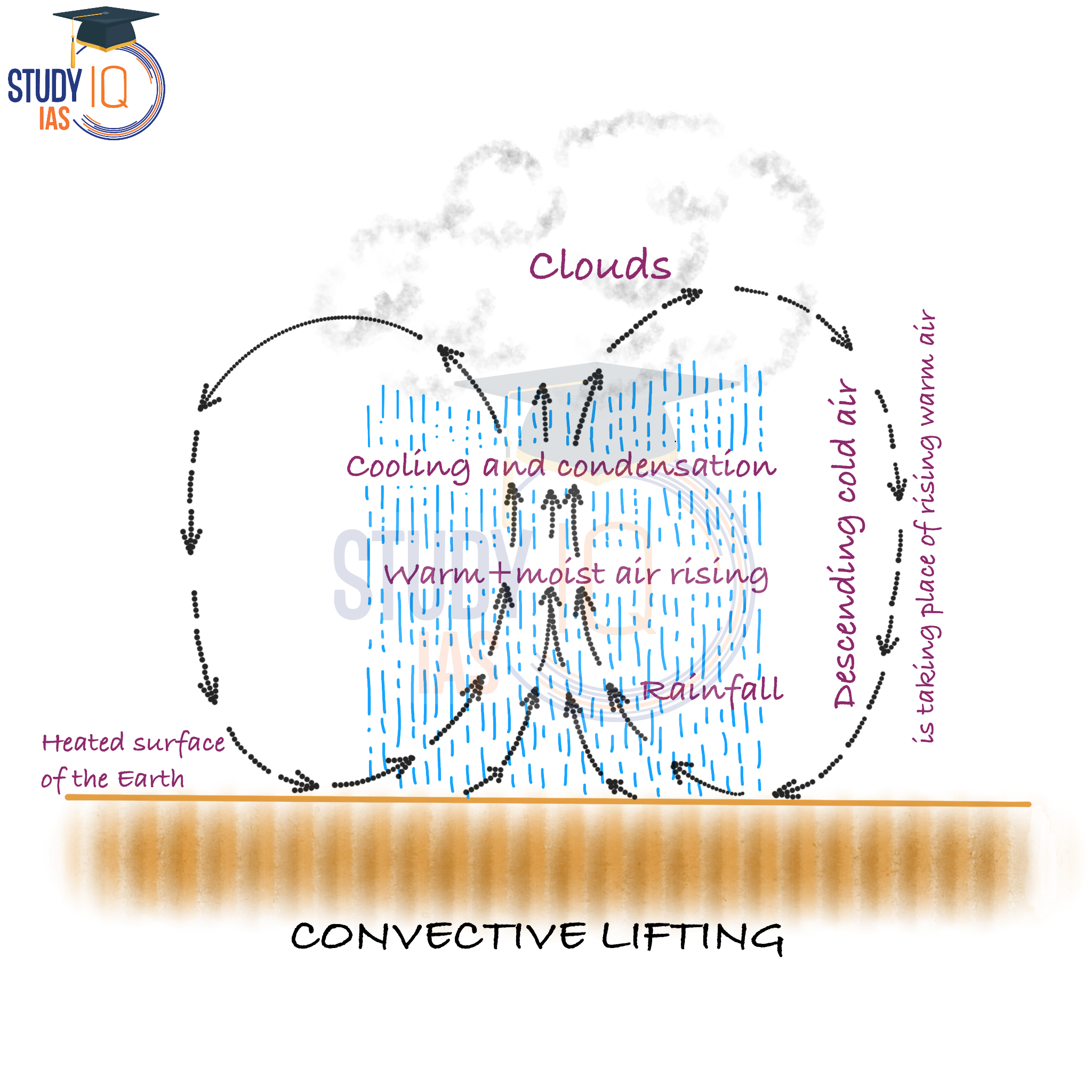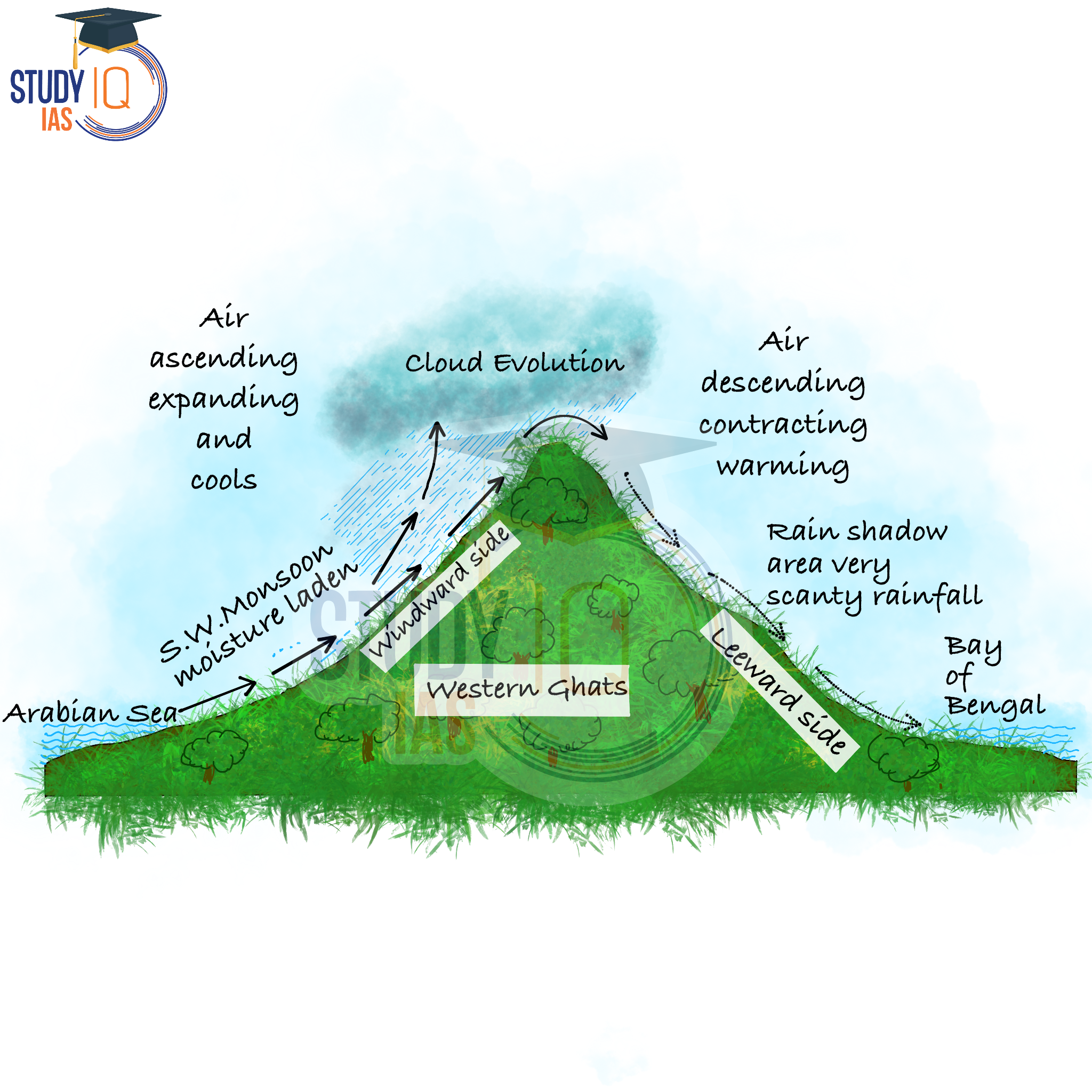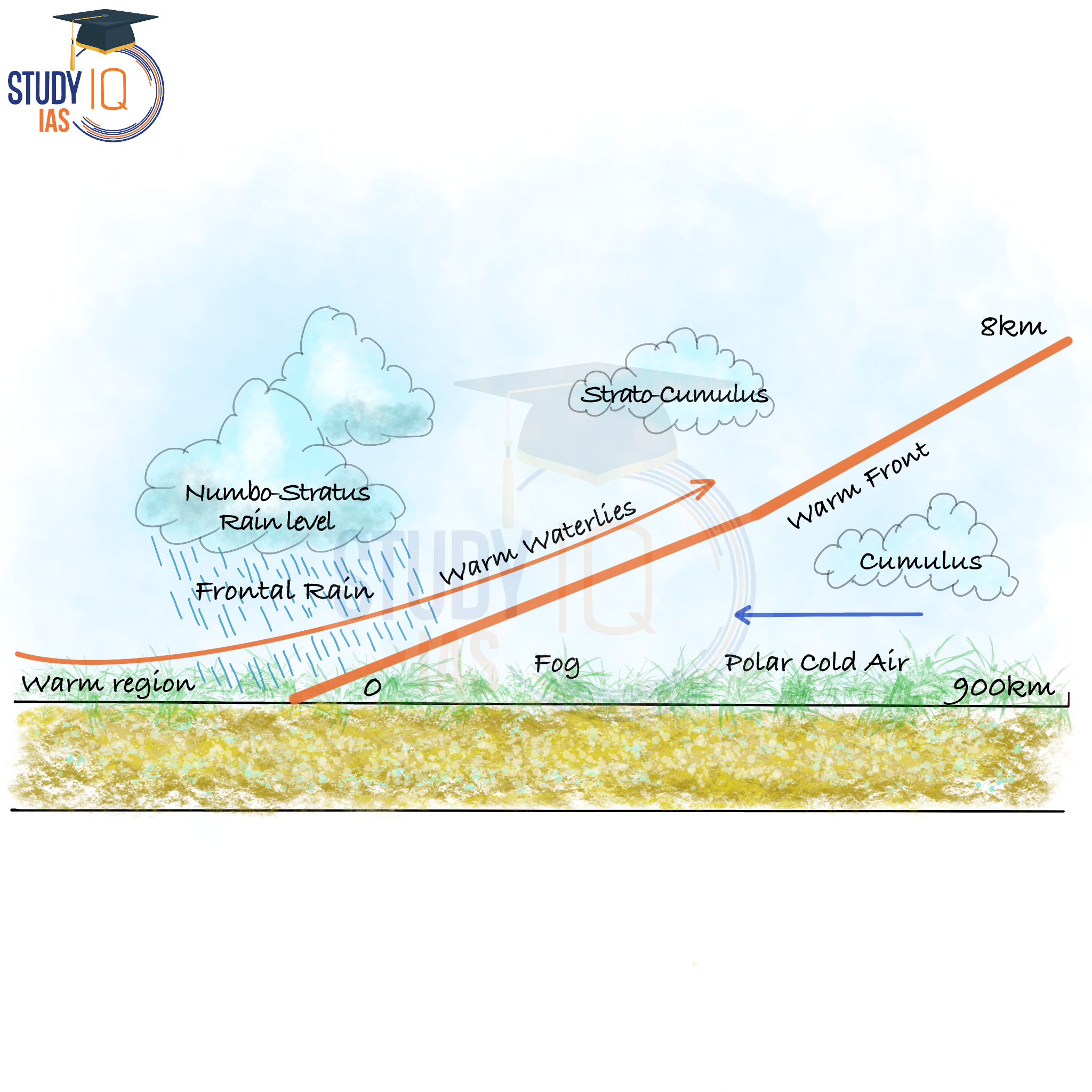Table of Contents
Rainfall is a crucial natural phenomenon that significantly impacts weather patterns, ecosystems, and human activities across the globe. Understanding the different types of rainfall and their distribution is essential for geography enthusiasts and civil services aspirants, especially those preparing for UPSC. This article provides a detailed guide on rainfall types, their mechanisms, distribution patterns, and associated maps for UPSC preparation
Rainfall
Rain is precipitation, meaning water falling from the sky to the ground. Rain is liquid, but there are other types of precipitation too. Precipitation comes in three forms: liquid, freezing and frozen. Precipitation falls on the earth in various forms. The form depends on the method of formation and the temperature during formation.
Rain is an important part of the water cycle. It brings most of the fresh water to Earth and creates the right conditions for many ecosystems to thrive. Rain also helps generate electricity in hydroelectric plants and is used for watering crops.
Types of Rainfall
Rainfall is generally classified into three types based on the mechanism through which it is formed:
- Convectional Rainfall
- Orographic (Relief) Rainfall
- Frontal (Cyclonic) Rainfall
| Type of Rainfall | Convectional Rainfall | Orographic (Relief) Rainfall | Frontal (Cyclonic) Rainfall |
|---|---|---|---|
| Formation Process | Surface heating causes warm, moist air to rise and cool, forming clouds and rain. | Moist air rises over mountains, cools, and condenses, causing rain on the windward side. | A warm air mass meets a cold air mass, forcing the warm air to rise and condense into rain. |
| Key Location | Tropical regions (e.g., Amazon Basin, Central Africa, Southeast Asia) | Mountainous regions (e.g., Western Ghats in India, Andes, Rockies) | Temperate regions (e.g., North America, Europe, and parts of Asia) |
| Occurrence Time | Mostly in the afternoon or evening, especially in summer. | Common on the windward side of mountains; the leeward side gets less rainfall. | Occurs during cyclones or weather fronts, typically in temperate climates. |
| Example | Equatorial regions of Africa, the Amazon Basin experience it almost daily. | Heavy rainfall on the windward side of the Western Ghats; dry Deccan Plateau. | Common in Europe during winter warm Atlantic air meets colder polar air. |
| Rainfall Distribution | Localized, usually intense, short-duration rains. | Concentrated on windward sides of mountains; rain shadow effect on leeward sides. | Widespread rainfall over larger areas, often prolonged. |
Necessary Conditions for Rainfall
- Presence of Moisture: Moisture from oceans, seas, rivers, and lakes is essential for rainfall. High humidity ensures enough water vapor is available for condensation.
- Cooling of Air: Air must cool down for condensation to occur, which can happen through rising or contact with cooler surfaces.
- Condensation Nuclei: Tiny particles like dust or salt act as condensation nuclei, helping water vapor to form droplets.
- Saturation of Air: Air needs to reach 100% relative humidity for condensation to begin, leading to cloud formation and rainfall.
Specific Conditions for Different Types of Rainfall
- Convectional: Requires intense surface heating, abundant moisture, and low-pressure zones.
- Orographic: Needs elevated terrain, moist air, and windward ascent.
- Frontal: Involves the collision of warm and cold air masses, cyclonic activity, and sufficient moisture.
Additional Factors
- Topography: Mountains enhance orographic rainfall.
- Wind Patterns: Trade winds and monsoons bring moisture to land.
- Temperature and Pressure: Warm, rising air and low-pressure systems promote rainfall.
Details of Classification of Rainfall
Rainfall is classified as Convectional, Orographic, and Convergence rainfall based on the mode of occurrence:
1. Convectional Rainfall
Different surfaces heat up at different rates, causing air near the ground to warm up more than the surrounding air. This warm air is lighter so it rises. As it rises and cools below the dew point, condensation occurs, forming clouds that can lead to thunder and heavy rain. This process is known as convectional rainfall, which is common in equatorial regions and the interior of continents, especially in the northern hemisphere.

2. Orographic Rainfall
Orographic rainfall occurs when warm air rises over a mountain. As the air goes up, it cools and forms clouds, which then cause rain on the side of the mountain facing the wind. When the air goes down the other side, it warms up and does not bring much rain, creating a dry area called a rainshadow. This kind of rainfall can be seen in places like Cherrapunji in Meghalaya, India.

3. Frontal Rainfall or Cyclonic Rainfall
This happens when big air masses come together. A front forms when a cold polar air mass meets a warm westerly air mass. The warm air rises, and the cold air sinks. These fronts usually occur in temperate areas where cold and warm winds meet. The warm air above the cold air cools down, leading to condensation around tiny particles in the air.

Warm air rises along the slanted front instead of going straight up like in convection. This front is where high pressure, cooling, clouds, and rain happen, and it is called frontogenesis. Frontal rain usually happens in the middle latitudes, where warm westerly winds meet cold polar winds. Frontogenesis is also how temperate cyclones form. In India, these cyclones bring rain during winter, called western disturbances.
Rainfall Global Distribution
Rainfall is not uniformly distributed on earth. Different regions of the world receive different amounts of rainfall depending upon their location and seasons. The world can be divided into the following areas based on the rainfall received.
1. Areas of Heavy Rainfall
These regions receive more than 200 cm of annual precipitation. The main areas include the equatorial belt, the mountain slopes of the western coasts in the cool temperate zone and the coastal areas of monsoon lands.
2. Areas of Moderate Rainfall
The regions receive 100 cm to 200 cm of annual precipitation. The main areas lie near the regions of heavy rainfall. The coastal areas in the warm temperate zone also receive moderate precipitation.
3. Areas of Low Rainfall
These regions receive 50 cm to 100 cm of annual precipitation. The main areas lie in the central part of the tropical lands, in the eastern and the interior parts of the temperate lands.
4. Areas of Scanty Rainfall
These regions receive less than 50 cm of annual precipitation. The main areas are the leeward slopes of the mountain ranges, the continental interiors, the western margins of the continents in the tropical areas and the arid deserts.
Rainfall Precipitation Seasonal Distribution
The conditions for rain do not happen the same way all year. That’s why rainfall changes with the seasons. Most places in the world get a lot of rain in the summer. Here are the main features of seasonal rainfall:
The equatorial region experiences heavy rainfall all year.
- A few degrees north or south of the equator have wet summers and dry winters.
- The monsoon circulation brings more seasonal contrasts resulting in wet summers as the wind blows onshore and dry winters as the wind blows offshore.
- Seasonal variation, due to the monsoons, is well-developed in the Indian Subcontinent and in Southeast Asia.
- Most of the western coastal areas in the mid-latitudes have dry summers and wet winters due to the presence of the subtropical high-Pressure Belts.
- In the temperate region, the precipitation is cyclonic in nature and cyclones are more common in the winter season. Thus heavy rainfall occurs in winter and not in summer.
Rainfall UPSC
Rainfall is the gravitational fall of atmospheric moisture in the form of water. Snow is the precipitation of white opaque crystals that occurs when the temperature falls below zero degrees Celsius. Rain does not fall unless the cloud droplets become so large as a result of coalescence that the air can no longer hold them. This article discusses the various types of rainfall based on their origin which is beneficial for UPSC aspirants.
| Related Articles | |
| Types of Rocks | Heat Waves |
| Types of Winds | Structure of the Atmosphere |
| Evaporation and Condensation | |


 Places in News for UPSC 2026 for Prelims...
Places in News for UPSC 2026 for Prelims...
 Lake Natron: Location, Features, Wildlif...
Lake Natron: Location, Features, Wildlif...
 Erra Matti Dibbalu Added to UNESCO Tenta...
Erra Matti Dibbalu Added to UNESCO Tenta...

























